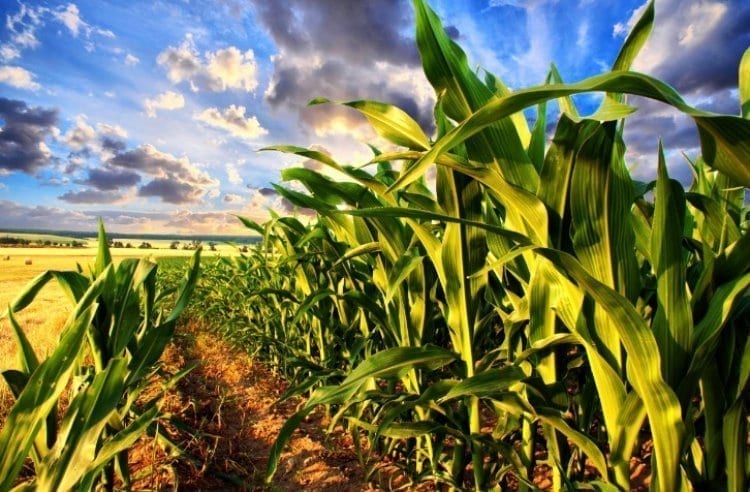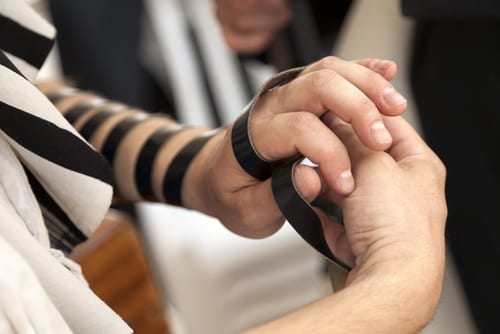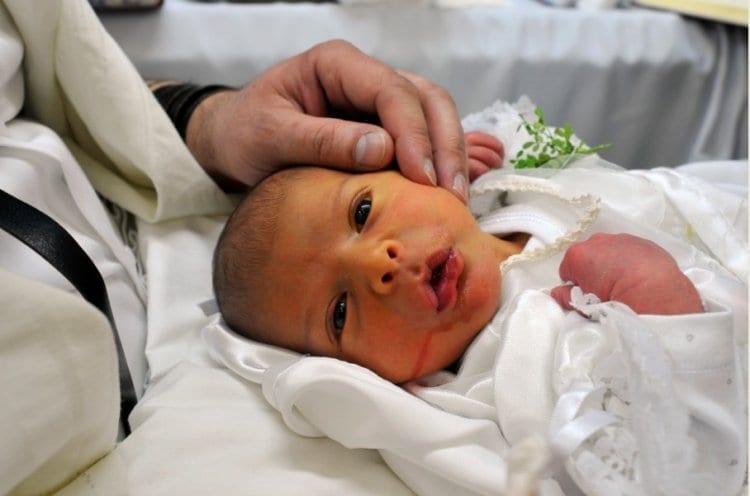Would you buy a lamb for the Pesach sacrifice in the event we merit the Temple being built tomorrow, Passover eve? Before you get excited about it, pause for a moment. If you buy a lamb for the Pesach sacrifice – it becomes dedicated to being sacrifice and holy items are forbidden completely for personal use. If Pesach passes and Mashiach does not come, anyone who leans on the sheep or strips even one thread from his wool will commit a grave sin. In short, whoever buys a lamb today and declares “this lamb is for the Passover sacrifice, creates great potential to sin inadvertently and transgresses the verse “Before the blind you shall not place an obstacle.” Nevertheless, there is a halachic approach permitted nowadays to express the hope of redemption and to prepare ourselves for bringing the sacrifice of Pesach on the coming holiday. The Institute of the Laws of Sacrifices shows us how.
The Institute for the Laws of Sacrifice was established seven years ago, “says Rabbi Abraham Kagan, a senior member of the Institute.” The catalyst for establishing the institute was the writings of the Chofetz Chaim which emphasize the importance of the people of Israel preparing for the redemption. Just as a bride organizes and prepares for her wedding, says the Chofetz Chaim, so too it is impossible for us to wait idly for the approaching redemption and not prepare ourselves for the new life that we will then merit. If G-d comes down from the heavens, as the verse says, “Suddenly the Lord, whom you seek, will come to His palace” there is a possibility that we will have to wait a few months until the sacrifices are renewed for we won't know the laws pertaining to them.”
During our long exile our sages focused on the laws relevant to our times in which there is no Temple as of yet. But what will happen when the Temple is built, with God's help soon? According to Rabbi Kagan, the laws relating to Temple service are numerous and very comprehensive, and can’t be mastered overnight.
“In order to meet this need, the Institute was established to focus on the study of the laws of the Temple. Most Temple study institutes deal with the external issues: the vessels and the clothes. We concentrate on what happens after the Temple and its vessels are already built. Without knowledgeable priests there will be no service in the temple. There are also skills that every Israelite needs to know such as stripping the skin and removing the innards.”
The institute began as an evening kollel, (fellowship for married students) and later became a Friday kollel, and today it already has a few half-day Kollels and intersession yeshivas. Some of the Institute's members also published books on the laws of Temple service: the laws of the Pesach sacrifice and the laws of the High Priest on Yom Kippur. The Institute also publishes brochures and pamphlets that teach the laws of the Temple in a clear and accessible manner. In addition to theoretical learning, says Rabbi Kagan, in summarizing each topic, students train in practical skills doing tasks like throwing blood and finding the innards. “Everything is being done in order to be as precise as possible in understanding the details of the halachot.”
Acquiring mastery of all the laws of the Temple service, it turns out, is a long and complex process. “We have been studying for seven years. Up to now we completed only about 20 percent of all the laws of the Temple service,” explains Rabbi Kagan. The entire endeavor is financed solely by private donations, since the institute does not receive support from any official body.”
Last year the institute decided to organize and search for a lamb suitable for a Passover sacrifice. “It occurred to us that if the redemption comes on the eve of Passover, we will need sheep to come from the heavens for the Passover sacrifice since most of the sheep in Israel are considered blemished as they have a pierced ear. We know you can't rely on miracles so we decided to organize getting a lamb that was kosher for sacrifice.
Four days before Pesach, as the Bible commands, we checked the lamb with the kollel students who studied the matter of animal blemishes in depth. This is a very complex matter. The Talmud says that one of the Amoraim invested 18 months studying this topic. We made sure not to designate the lamb for the Passover sacrifice. We only agreed that if the Temple is built this year, this lamb will serve as a sacrifice for Pesach.”

Last Year’s Korban Pesach project, says Rabbi Kagan, was an arrangement of members of the Institute and their families. This year, however, they made it available to the public. “We turned to Rabbi Chaim Kanievsky, who was very fond of the idea and even purchased a kezayit in our sheep. We found an address in the Old City where we will eat the sacrifice if the Temple is built. We even hired experts who promised us that if the Temple comes, they will dig out the ischiatic nerve from the hind leg of our sheep and prepare them for sacrifice. “At the same time, leaflets were distributed to those who would like to call and purchase a kezayit (olive size of meat) of this lamb suitable for sacrifice. It's just an expression of our yearning for redemption.”
Last Tuesday, the institute held a special event as part of our efforts to teach the public about the laws pertaining to the Pesach sacrifice.
“First of all, we gave a lesson on all the blemishes that can invalidate a sacrifice. Then a slaughtered lamb was brought in and we demonstrated how to do the service of the Korban Pesach: how to strip the skin, how to get the blood, how to put the innards on the altar.”
This of course was not the lamb that if the Messiah would come would be used as a Pesach sacrifice?
“No, no, that sheep is painted and marked and kept in its barn. This was a lamb that someone bought to eat on Passover.”
By the way, since the slaughtered sheep was “Chullin” meaning without status of holiness, the status of any animal we slaughter today, the institute also organized a ritual of giving gifts of priesthood. The arm, cheeks and stomach of the sheep were given to a Cohen with family pedigree, Rabbi Yosef Rappaport, a Rosh Kollel in Bnei Brak. The kashrut organizations have different arrangements with non-Jews or a Cohen who own a part of a beast, and exempt themselves from being obligated to give the arm cheeks and stomach to a Cohen. However someone who buys a sheep on his own and slaughters it should bring the right arm, cheeks and stomach to a Cohen.




